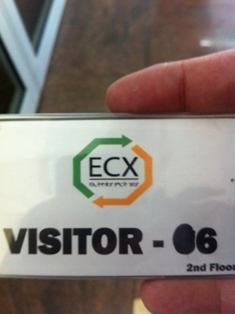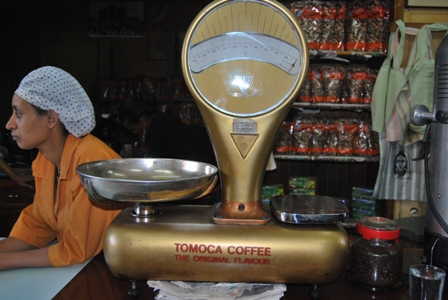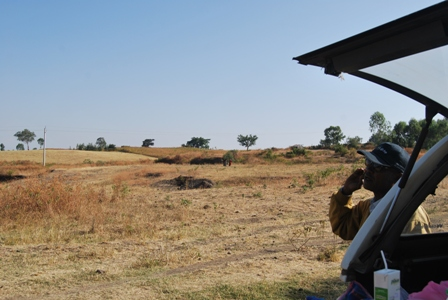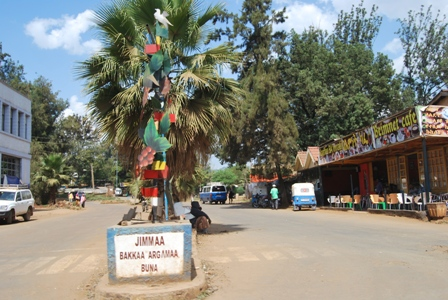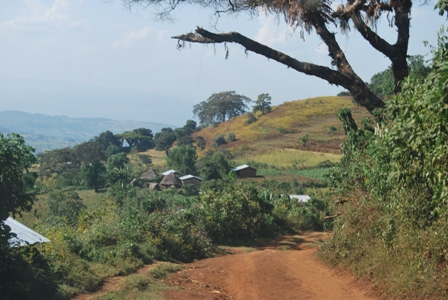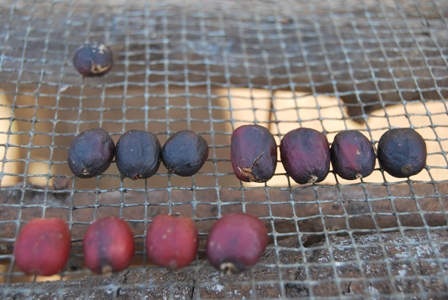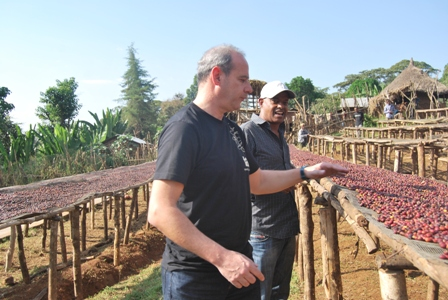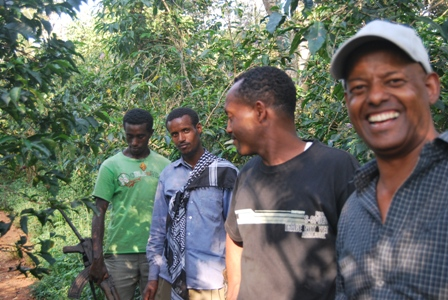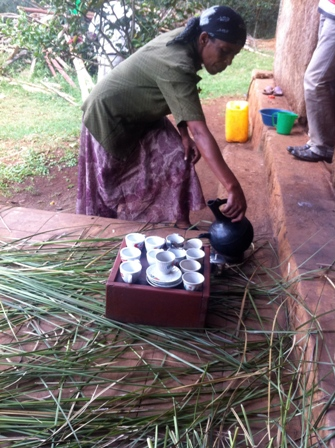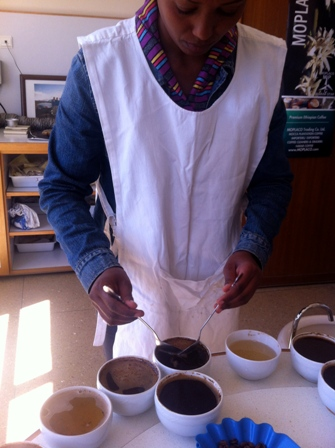
This time, my planned visit in Ethiopia included the West coffee producing zone and therefore the regions Jimma, Limu and Kaffa – Kaffa according to the myth is considered the birthplace of coffee.Jimma is located 360klm away from Addis Ababa, the capital of Ethiopia, a distance up to 7 hours by car.
The bulk of Ethiopia’s natural coffee exports come from Djimmah. The coffees from this region have a clean cup and good flavour. The altitude of the region is from 1650m up to 2000m and harvest period is from November until January.
Limu is located approximately 40klm away from Jimma. Even though this region is not so famous compared to Sidamo and Yirgacheffe, coffees from Limu have a higher quality and are characterized by a distinctive wine taste. Even though the region is dominated by small farmers, there are also plantations owned by the government. The altitude of the region is from 1400m to 2100m and harvest period is from November until January.
Kaffa according to the myth is considered the birthplace of coffee. It is located in the southwest part of Ethiopia and took its name from the kingdom of Kaffa. Being the birthplace of coffee, this region is dominated by wild plantations and the main source of people’s income is coffee.
All the trees in the region are Arabica trees and from these trees come all the different Arabica varieties that we know now. The altitude of the region is between 1900m and 2100m and harvest period is from November until January.
The previous day I had visited the ECX. ECX (Ethiopia Commodity Exchange) is an initiative of the government of Ethiopia and it is an organized marketplace that serves all market factors, from farmers to traders to exporters and final consumers. ECX procedures assure security, consistency and transparency in transactions and create opportunities for development.
After my visit at the ECX I went for a quick visit to Addis Ababa market and to Tomocca for a coffee.
The drive from Addis Ababa to Jimma started at 5 o clock in the morning and lasted 7 hours.
When we reached Jimma, we waited for the farmer Akmel Nuri Siraj and then started immediately to drive to his farm located near the city Kossa, Limu region.
When we arrived in Kossa it took us one extra hour to cover a distance of 7klm to reach the farm, due to the bad condition of the road and the difficult access.
At the farm we saw that Akmel is making efforts to improve the infrastructure and the building of new beds for the drying of coffee cherries, since all of his coffee is processed as natural coffee.
Akmel’s farm has shades trees called Grevillea.
The next day we visited the plantations owned by the government in Limu region , 50klm away from Jimma with a production of 27 tons of red cherries per year.
In general, the coffee that comes from organized plantations such as the one that we visited produces 5-7% of the total production of Ethiopia.
Next, we visited Doyo Cooperative consisting of 100 members. This cooperative uses ecopulpers for the processing of cherries funded by Technoserve (Bill Gates Foundation).
Our visit at Jimma’s research center was remarkable. There, Dr. Taye Kufa explained to us how coffee trees are select ed from the forest, how they observe their yield for 5-7 years and how they develop hybrids.
He explained to us how they analyze the soil and that the main goal of the whole research is to codify the wild and unknown coffee varieties (6000 coffee trees) and categorize them into “groups” (until now there are 37 out of which 11 are specialty varieties).
Our visit to Kaffa, the so called birthplace of coffee according to the myth, was particularly interesting. We observed that the soil there is black and that its yield is larger.
We visited Adissu Beyene’s farm which has an ideal microclimate. Adissu has built very good infrastructure regarding natural and washed processing of coffee, using the penagos machine.
The storage of coffee is done under ideal conditions so that the coffee processing is not influenced by humidity.
We had the opportunity to have lunch with the people of the farm who offered us local food and coffee prepared with the traditional way.
The coffees that we expect after this visit to Ethiopia are from Limu (Limu 1) and from Kaffa (Boginda lot).
Yiannis Taloumis
